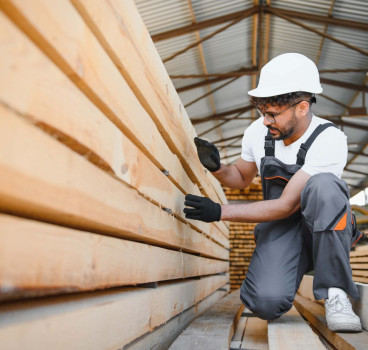Green Technology in Construction
Construction output is on the rise globally, but limited resources and awareness of the need to be environmentally responsible mean that you must be conscious of the environmental impact of all building projects writes Tom Moverman. There are four ways that technology is helping “green” the construction industry.
Energy-Efficient Building Features
There is clear customer demand for builders to be knowledgeable about and experienced in working with the modern technologies that allow for sustainable and environmentally friendly materials to be used in both commercial and residential projects.
The benefits are clear when considering the financial efficiency of these options, along with government tax incentives for homeowners and businesses that have incorporated green technology systems like
• Photovoltaic cells
• Solar heaters
• Geothermal power
• Wind systems
• Updates to building envelope features on existing properties including doors, windows and skylights, roofs, and insulation
These technologies may come with a greater investment up front compared to traditional options, but overall the cost savings for the future make them worthwhile.
Building Information Modeling (BIM)
BIM is not just a type of software, but the entire process of using this technology in the architecture, engineering, and construction fields to build 3D digital models. From concept planning to beginning the building design, BIM takes users through all of the necessary steps in construction and management of the project, while remaining conscious of the building's environmental impact.
Building Information Modeling facilitates savings and improves efficiency in construction, based on the expectation that this system results in fewer mistakes and prevents potentially costly changes during the building process.
BIM is a huge advancement on past practices of CAD design using 2-D drawings or 3-D models separated into multiple sections. With BIM, if a change is made in one area, it automatically updates throughout the entire project. Envisioning the completed design as a whole is effortless, and any potential issues are easy to spot early in the design process. Learn more about the benefits of using BIM technology here.
According to a recent Market Research Engine report, the BIM market is anticipated to experience continued significant growth worldwide. In 2014, the global BIM market was valued at US$2.3 Billion, and is expected to reach a value of US$ 13.2 Billion by the end of 2024.
Prefabricated Construction
BIM has also helped increase the opportunities for industrialized construction sites that allow you to create prefabricated and modular buildings in controlled offsite environments. There are a number of benefits to building this way, including
• Increased worker safety
• Reduced costs on materials
• Less waste
• Greater energy-efficiency in the buildings produced
• Tighter delivery timelines
Virtual Reality
VR is much more than just a tool for gamers. This technology allows for a construction planning process that includes realistic walk-throughs of planned projects. Developers can interact with their design, notice any potential problems, and see where improvements can be made, all before anything is actually built. This method is amazingly vivid compared to the past practice of working with static 3-D mock-up models.
Virtual reality is also especially helpful for education, as now students who may have never been on an actual construction site can get a real feel for that environment, all from the safety of the classroom.
Customers can also benefit from VR by being able to take part in making decisions about the functionality and flow of the building during the planning process.
Technology is driving the construction industry now more than ever, and it is sure to continue to do so as future strategies and tools arise that will help designers, engineers and builders create even greater sustainability in construction.
Author Bio: Tom Moverman established the Lipsig Law Firm with Harry Lipsig and his partners in 1989. The personal injury law firm focuses on products liability, personal injury, construction accidents, car accidents and medical malpractice. For more information, visit LipsigLawyers.com
Additional Blogs

What if Building Control went fully digital?
Building control governs structural integrity, fire protection, energy efficiency, accessibility and countless other aspects of design and construction. Historically, this process has been highly...
Read moreWhere most “Smart Buildings” go wrong
Smart buildings are often presented as the ultimate in modern construction - interconnected, efficient, intuitive and driven by real-time data. They promise lower operating costs, reduced energy use,...
Read more

The future of facilities management starts at RIBA Stage 0
Facilities management has traditionally been treated as a discipline that only becomes relevant once a building is handed over. At that point, FM professionals inherit decisions made months or years...
Read more